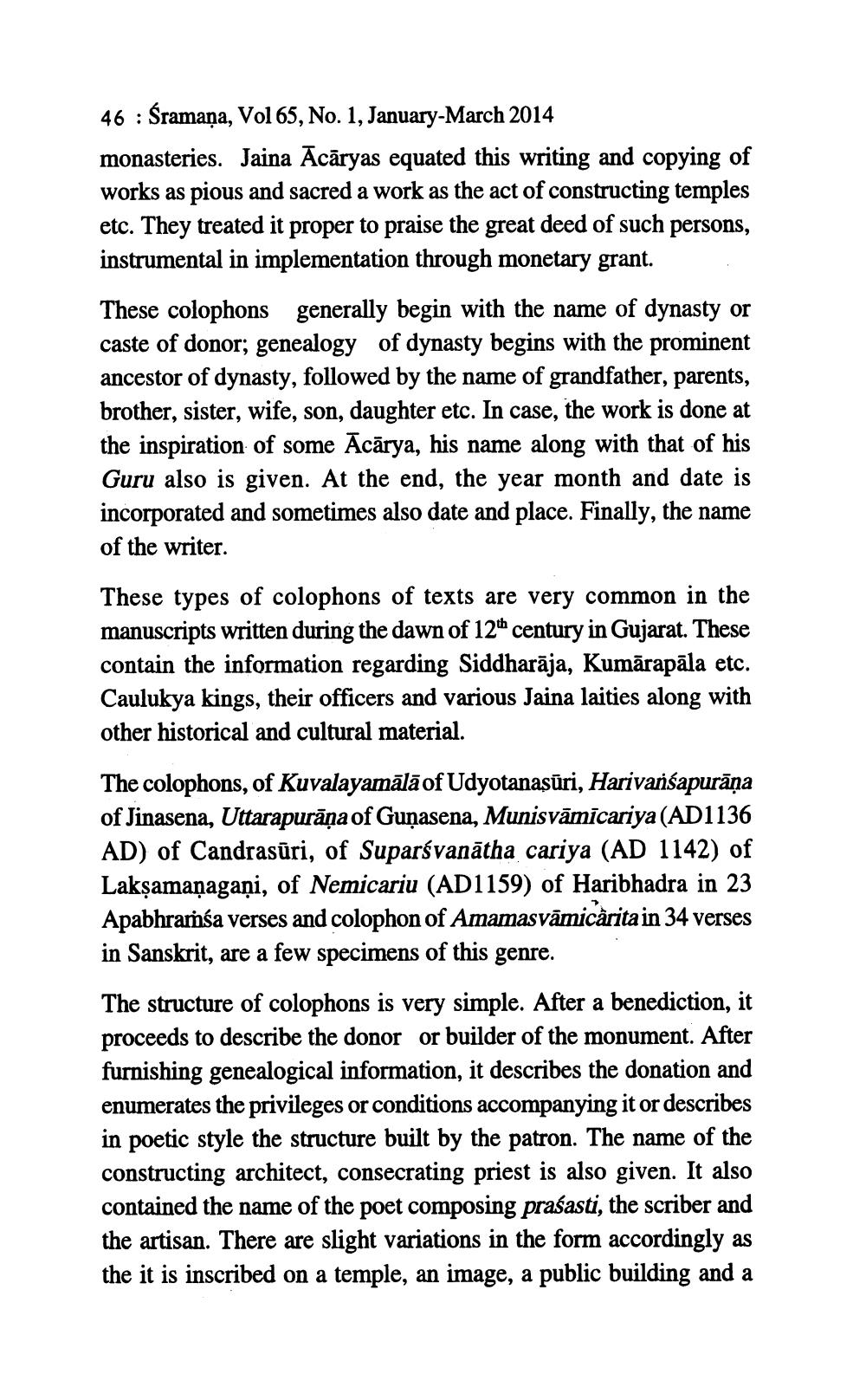________________
46 : Śramaņa, Vol 65, No. 1, January-March 2014 monasteries. Jaina Ācāryas equated this writing and copying of works as pious and sacred a work as the act of constructing temples etc. They treated it proper to praise the great deed of such persons, instrumental in implementation through monetary grant. These colophons generally begin with the name of dynasty or caste of donor; genealogy of dynasty begins with the prominent ancestor of dynasty, followed by the name of grandfather, parents, brother, sister, wife, son, daughter etc. In case, the work is done at the inspiration of some Ācārya, his name along with that of his Guru also is given. At the end, the year month and date is incorporated and sometimes also date and place. Finally, the name of the writer. These types of colophons of texts are very common in the manuscripts written during the dawn of 124 century in Gujarat. These contain the information regarding Siddharāja, Kumārapāla etc. Caulukya kings, their officers and various Jaina laities along with other historical and cultural material. The colophons, of Kuvalayamālā of Udyotanaşūri, Harivarśapurāņa of Jinasena, Uttarapurāņa of Gunasena, Munisvāmīcariya (AD1136 AD) of Candrasūri, of Suparsvanātha cariya (AD 1142) of Laksamaņagani, of Nemicariu (AD1159) of Haribhadra in 23 Apabhrarśa verses and colophon of Amamasvāmicãrita in 34 verses in Sanskrit, are a few specimens of this genre. The structure of colophons is very simple. After a benediction, it proceeds to describe the donor or builder of the monument. After furnishing genealogical information, it describes the donation and enumerates the privileges or conditions accompanying it or describes in poetic style the structure built by the patron. The name of the constructing architect, consecrating priest is also given. It also contained the name of the poet composing praśasti, the scriber and the artisan. There are slight variations in the form accordingly as the it is inscribed on a temple, an image, a public building and a




